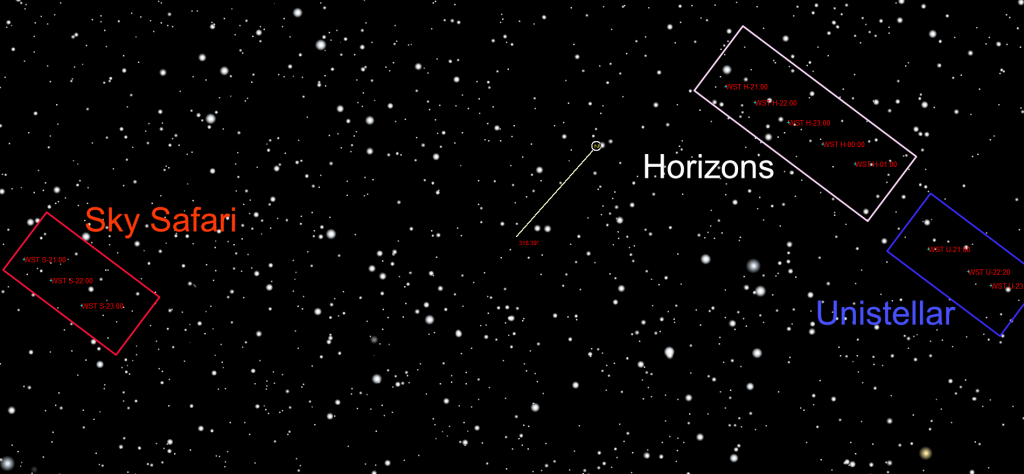I have had some fun the last few clear nights we have had, catching The Webb Space Telescope as it passed from Orion into Monoceros.
It has been challenging as the positions given by The Nasa Horizons Web page haven’t always been that accurate.
They have got me to the general area of sky, but I have had to take a number of images some minutes apart and use the blink comparator method used by Clyde Tomaugh to flick between them and identify the faint moving target.
This was often to one side of the filed of view and had to be re-centred to put Webb in the centre of the image.
So when I was directed to Unistellar’s Web site and Webb appeared as a satellite in Sky Safari, I thought I would see how close their predicted positions compared to one another.
Horizons: https://ssd.jpl.nasa.gov/horizons/app.html#/
Unistellar: https://unistellaroptics.com/ephemeris/?fbclid=IwAR3fx3BlINOwRSpU6ZJ1EFUhJOaRF_LOdFaJ3zab9ZoS5pi-nDDbjMebR5A
I generated positions for tonight, using both Web sites and Sky Safari and plotted them in planetarium software.
The results are shown below.
I think I will stick to using NASA’s Horizon Web site to make the predictions, as at least this did get me fairly close to the space telescopes position, the last three times.
But considering how faint it was last night, I’m sure it won’t be long before it is lost from my view.
But of course you just never know unless you keep trying.

